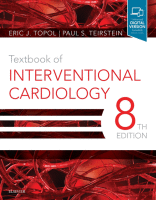Physical Address
304 North Cardinal St.
Dorchester Center, MA 02124

Key Points An inverse relationship between experience and outcome for higher-risk procedures has been repeatedly demonstrated over the past 30 years. In the case of percutaneous coronary angioplasty, the minimum volume thresholds involve low numbers of fewer than four cases…

Key Points Owing to increasing state and federal regulations, direct patient access to publicly available information about the quality of care, as well as pressures from payers for cost-efficiency, the delivery of care in the cardiac catheterization laboratory is being…

Key Points There are three forms of full economic evaluations that do not assume equivalence of health outcome: cost-effectiveness analysis (CEA), cost-utility analysis (CUA), and cost-benefit analysis (CBA). Both CEA and CUA are widely used to decide whether a medical…

Key Points Optical coherence tomography (OCT) is an innovative catheter-based imaging technology that uses light and fiberoptic technology to obtain unique details of the vessels on a microscopic scale. OCT provides real-time, full tomographic views of the coronary arteries with…

Key Points Globally cardiovascular disease (CVD) is the leading cause of death, accounting for greater than 17.3 million deaths per year in 2013. The mechanisms involved in acute coronary thrombosis are well established and include of plaque rupture, erosion, and…

Key Points Intravascular ultrasound (IVUS) was the first clinical imaging method to directly visualize atherosclerosis and other pathologic conditions within the walls of blood vessels. Improvements in core IVUS technology have allowed for higher-resolution images and greater operator convenience. IVUS…

Key Points An enhanced understanding of coronary lesion complexity remains a valuable tool for estimating early and late procedural risk after percutaneous coronary intervention (PCI). Aggregate scores that consider the vessel patency and underlying lesion morphology provide the most relevant…

Key Points Despite current guideline-directed drug and electrophysiologic device therapies, many heart failure patients remain highly symptomatic, and outcomes remain poor. New therapies are needed to improve patients’ clinical status and outcomes. Several causes of heart failure are amenable to…

Key Points Paravalvular regurgitation (leak) affects 5% to 17% of all surgically implanted prosthetic heart valves. Echocardiography is pivotal in the evaluation of both mitral and aortic paravalvular leaks. Surgical repair is effective but has significantly higher complications rates compared…

Key Points Advances in reperfusion therapy have led to the development of a large population of patients with chronic heart failure. Modulation of cardiac tissue is the next great frontier to lessen symptoms of heart failure and improve patient outcomes.…